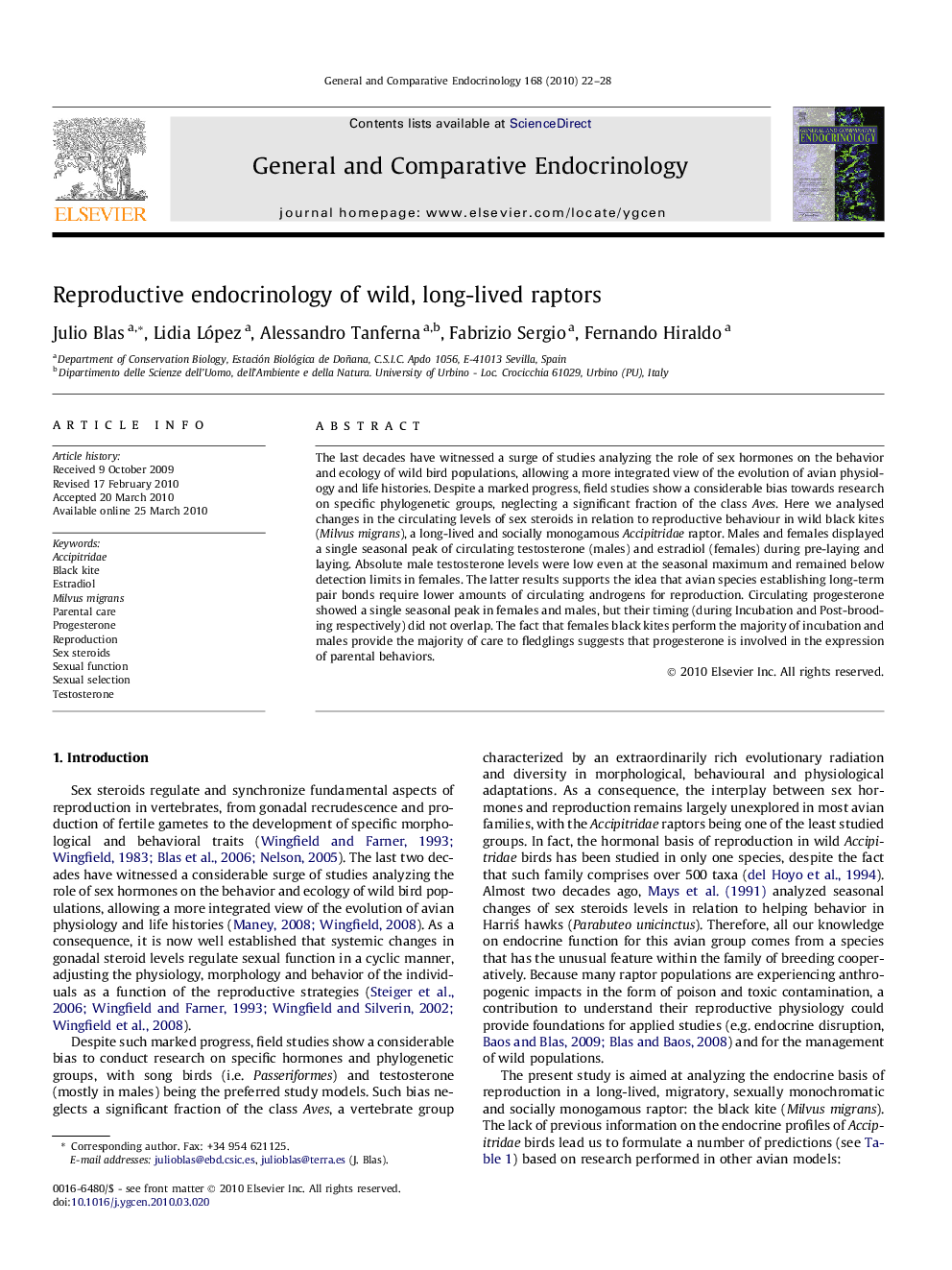| Article ID | Journal | Published Year | Pages | File Type |
|---|---|---|---|---|
| 2800970 | General and Comparative Endocrinology | 2010 | 7 Pages |
The last decades have witnessed a surge of studies analyzing the role of sex hormones on the behavior and ecology of wild bird populations, allowing a more integrated view of the evolution of avian physiology and life histories. Despite a marked progress, field studies show a considerable bias towards research on specific phylogenetic groups, neglecting a significant fraction of the class Aves. Here we analysed changes in the circulating levels of sex steroids in relation to reproductive behaviour in wild black kites (Milvus migrans), a long-lived and socially monogamous Accipitridae raptor. Males and females displayed a single seasonal peak of circulating testosterone (males) and estradiol (females) during pre-laying and laying. Absolute male testosterone levels were low even at the seasonal maximum and remained below detection limits in females. The latter results supports the idea that avian species establishing long-term pair bonds require lower amounts of circulating androgens for reproduction. Circulating progesterone showed a single seasonal peak in females and males, but their timing (during Incubation and Post-brooding respectively) did not overlap. The fact that females black kites perform the majority of incubation and males provide the majority of care to fledglings suggests that progesterone is involved in the expression of parental behaviors.
